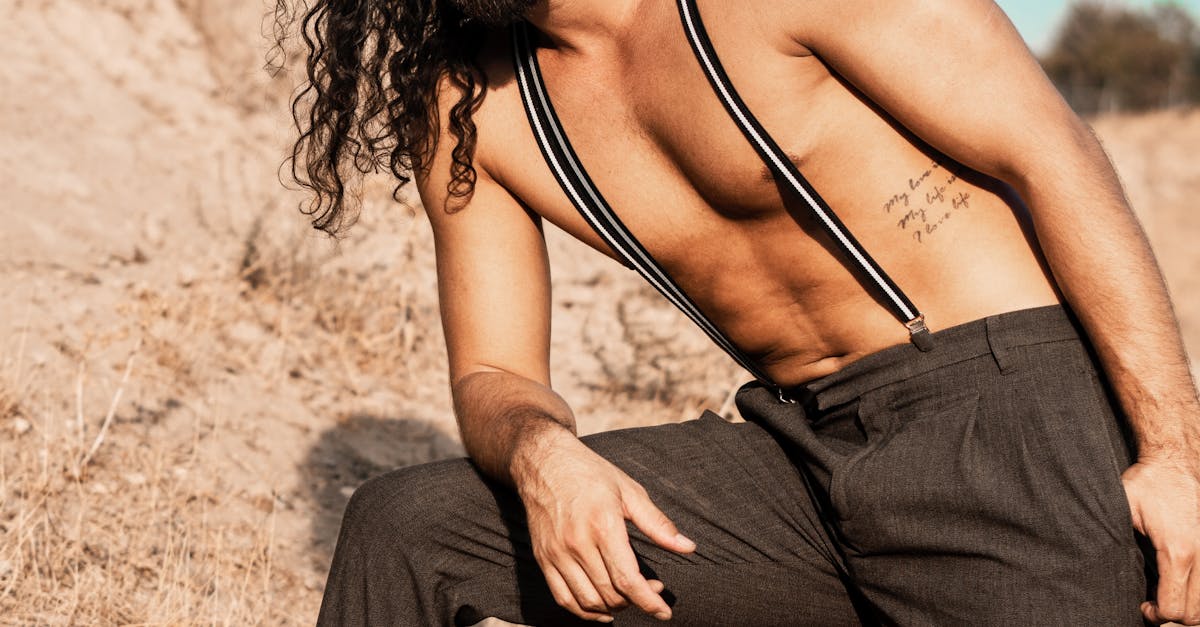
Boot Adjustment
Table Of Contents
Boot Adjustment
Finding the perfect fit for your boots is essential for comfort and performance, whether you're hitting the trails or navigating city streets. Proper boot fitting can significantly enhance your overall experience, reducing the risk of blisters and foot fatigue. To help you achieve the ideal fit, we’ve compiled expert tips for boot fitting that cover everything from measuring your feet to understanding the nuances of different boot styles. These insights will guide you in selecting boots that not only fit well but also cater to your specific activities and preferences.
When it comes to boot customization, knowing how to properly size and adjust your boots can make all the difference. A one-size-fits-all approach often falls short, as individual foot shapes and sizes vary widely. With the right approach and the expert tips for boot fitting, you can transform a mediocre pair of boots into your new favorite footwear. Emphasizing the importance of the fitting process, we’ll explore techniques and tools that enable you to customize your boots, ensuring a snug fit that supports your feet in all the right ways.
Picking the Best Boot for Your Style
When looking at selecting boots, choosing the best footwear is essential for maximum performance and comfort. Every activity requires tailored features that may enhance your experience. Take for instance, when you are hiking, you will want shoes that provide good support and durability, while lifestyle wear may prioritize fashion over technical features.
Fit is another vital aspect to think about when selecting your footwear. Your ideal boot should embrace your foot without causing discomfort. It is important to remember that the anatomical structure of feet vary greatly, so trying on multiple options is recommended. Moreover, seek out features such as breathability that align with your unique preferences to ensure the footwear not only fits well but also performs effectively in various conditions.
Aspects to Think About When Selecting Ski Boots
When choosing ski boots, one should consider the aspects that can influence performance. A proper fit is essential as it can affect your total experience on the slopes. Furthermore, ankle shape and instep are vital factors that can substantially affect how well the ski boots function.
One more key factor to consider is the stiffness of the boot. Specific levels of stiffness can enhance control and stability when skiing. In addition, the liner material can affect warmth and feel throughout the day. At the end of the day, considering the features of the boot can also play a role in your total enjoyment.
How to Look After Your Ski Boots
Effective maintenance is essential to ensure the lifespan of your boots. Routine cleaning helps remove dirt, salt, and moisture that can harm the material. Utilize a damp cloth to wipe down the exterior and a soft brush for any stubborn spots. Following cleaning, give your boots to air dry at room temperature, avoiding direct heat sources that can result in cracking or warping.
Applying conditioner on leather boots can also boost their appearance and ability to repel water. Be certain to use products specifically designed for your type of boot material. Store your boots in a cool, dry place when not in use to prevent mold and mildew growth. Reflect on using boot trees or stuff them with newspaper to help maintain their shape. Adhering to these simple practices will help keep your boots looking great and performing well for years to come.
Top Techniques for Maintaining Your Boots
In order to prolong the durability of your boots, suitable care is essential. Commence by washing the boots after each use. Employ a soft brush to clear away dirt and debris while ensuring you do not damage the material. Once cleaning, allow the boots to dry naturally away from direct heat sources. That helps maintain the shape and integrity of the materials. Additionally, applying a weather-resistant treatment can help maintain the boots protected from moisture and stains.
Frequent inspections of the boots are vital for spotting any signs of wear and tear. Inspect the soles for any damage or excessive wear, as well as the laces for fraying. Replacing worn-out components promptly can help avoid larger issues down the line. Placing your boots in a cool, dry place when not in use helps prevent mold and mildew. Incorporating boot trees or stuffing them with newspaper can help maintain their shape and absorb excess moisture. Such practices ensure your boots remain comfortable and ready for your next adventure.
Modern Methods in Boot Fitting
Today, the art of boot fitting has greatly transformed thanks to innovative techniques. Advanced 3D scanning has become a game changer in achieving a tailored fit. This technology allows fitters to capture the exact shape of a customer's foot, which ensures that all contour is taken into account. Furthermore, heat-moldable liners have become another advanced method that improves comfort and performance.
Another method that exhibits the progress in boot fitting is the use of tailored insoles. Through advanced materials and manufacturing, these insoles provide support that corresponds with the unique form of an individual's foot. The integration of high-tech solutions guarantees that all skier or snowboarder can enjoy a optimal fit, resulting to better performance and reduced fatigue. With these innovative technologies, the future of boot fitting appears promising.
Understanding Effect of Advancements on Footwear Adjustment
Advancements has changed the footwear adjustment in the past few years. By utilizing advanced scanning technologies, professionals can generate tailored models of each person's feet. This permits for customized fittings that guarantee comfort and performance on the slopes, in the end enhancing the overall skiing experience.
Furthermore, technological innovations in materials have led to the development of ultra-lightweight and more versatile boot designs. These improvements not only boost comfort but also enable skiers to have better control and responsiveness. As these innovative solutions, the industry continues to advance, making it simpler for skiers to find the perfect fit.